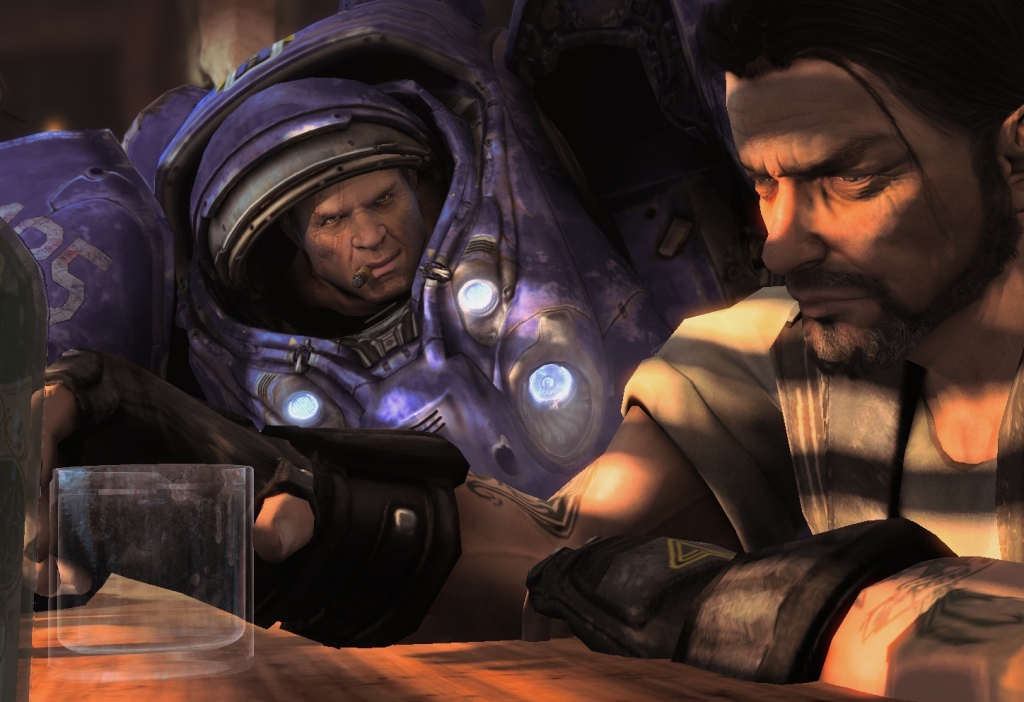Ok folks, it’s time. We’ve all asked this question, but I’ve been putting off answering it because we all actually know the answer.
How do the Zerg fly in space?
Magic.
There’s a certain point in sci-fi or fantasy where you have to just suspend disbelief and go along for the ride, and I think that the Zerg ability to travel through space is a good example of this. That said, I’d like to take a look at one of the most common explanations that people give to justify the mutalisk’s ability to flap its wings and propel itself through space. As you’ll see, it’s completely implausible.
Now, we know that flapping doesn’t do anything in a vacuum: there’s nothing to provide any resistance, so you can flap all you want and it won’t move you forward. But what if mutalisks used their dragon-like wings as solar sails, catching the photons from a nearby star to cruise through interplanetary space? That might not explain the flapping, but it could explain how they can move, so let’s take a closer look.
The idea behind solar sails is the conservation of momentum. Even though photons of sunlight have no mass, they do have momentum. High school physics tells us that momentum is conserved, so if you have a bunch of photons with momentum being absorbed by a solar sail (or a mutalisk’s leathery wing) then their momentum must be transferred to the thing they’re hitting, exerting a force on it and causing it to move through space. So, how large would a mutalisk’s wings have to be to let it accelerate at a reasonable speed? To figure this out, we need to do a back of the envelope calculation, making some assumptions about how big mutalisks are.
In general, the sizes of units in the game are not reliable: I prefer to consider the cinematics as the authoritative source. So let’s take a look at this cinematic showing Jim Raynor’s battlecruiser being attacked by a swarm of mutalisks.
[youtube=http://www.youtube.com/watch?v=pOh1YoaPbi0&w=640&h=385]
At about six seconds, one of the mutalisks flies over the right-hand side of the battlecruiser and crosses near a long row of windows. Based on its size compared to the set of windows, I would say that the creatures have a wingspan of around 100 meters and that their tube-like body is about the same length and maybe 5 meters across. If mutalisks are like most earth life, then they are mostly water. to get a rough idea of their weight we can calculate their volume and then multiply by the density of water. A cylinder 5 meters by 100 meters has a volume of about 2000 cubic meters. That would correspond to a whopping 2,000,000 kg or 2000 metric tons!
Now, obviously that’s too big for something to fly in at atmosphere, let alone in space by flapping its wings. But lets be generous and say that maybe mutalisks are made of some very low-density material, and maybe I overestimated their size. What if they were closer to 20 tons? How much oomph would their wings give them if they used them as solar sails. Again I’ll be generous and treat the wings as a square of material 100 meters on a side.
The momentum of a photon is given by: Momentum = Energy/Speed of Light, so near a sun-like star, where most photons are in the visible range, they have an energy of 2-3 electron volts, yielding a momentum of 1.6×10^-27 kg m/s per photon. That’s not much, but a star puts out a lot of photons, so let’s see if that balances it out and gives us a decent thrust.
Let’s say our theoretical mutalisk is orbiting the sun at the same distance as Earth, 150,000,000,000 m from the sun. The sun puts out 3.8×10^26 watts or roughly 8×10^44 photons per second, but that power is spread out in all directions. To figure out how much hits our solar-sailing mutalisk, we have to imagine spreading that power out over a sphere the size of our mutalisk’s orbit with a surface area of 4*pi*R^2 where R is the radius of the orbit. That gives 2.25×10^20 photons per square meter per second.

Solar sails don't make for the most maneuverable spacecraft, and they would be sitting ducks in any sort of space battle.
With a wing area of 100 m x 100 m (10,000 square meters), our mutalisk would intercept around 10^24 photons per second, corresponding to a whopping force of 0.0004 newtons! That’s enough force to accelerate a 20 ton mutalisk up to about 14 miles per hour in a year.
Edit: An astute reader points out that the size of mutalisks is described in the Starcraft novels as being much smaller than I described. They apparently have a wingspan of 20 feet and are only 7 feet long and about a meter across. to me that seems shockingly small, especially compared to the cinematics, and it also seems quite stubby compared to all of the art depicting mutalisks as having a body that is a long tube. Still, we can scale the above results to fit these new dimensions. Given a cylinder 7 feet long and 3.3 feet across, and again assuming a density like water, I get a mass of 1.7 metric tons. If we treat the wings generously as a 20 foot square, then their surface area is 37 square meters, so the thrust on wings of that size as compared to our 10,000 square meter example above would be .0004 newtons x .0037 = 1.5×10^-6 newtons. That’s enough to accelerate our 1700 kg mutalisk all the way up to 0.06 miles per hour in a year! Even assuming a much lower density, it would only accelerate a 170 kg mutalisk up to 0.6 miles per hour in a year.
You might not have followed every step of that (admittedly very crude) calculation, but that final value should give you some idea of how ridiculous it is to say that a Mutalisk’s wings could work as solar sails. Even assuming very large wings and a small body, the acceleration that you get is miniscule. Plus, solar sails are really only good for accelerating away from the star, and Mutalisks are like fighter jets: they need to be able to dodge and weave in all directions very quickly.
Bottom line, I can’t explain how the mutalisks fly in space. Heck, I can’t explain how something that big flies in air! Solar sailing certainly doesn’t cut it, so we’re left where we began. It’s magic. This is a part of the Starcraft Universe that just doesn’t fit with the laws of physics in our own universe, and that’s fine. Mutalisks are still cool, and it’s not like I’m going to stop playing Starcraft because I don’t know how they can fly in space.
Stay tuned: next I’ll take a look at all the non-winged Zerg fliers!









